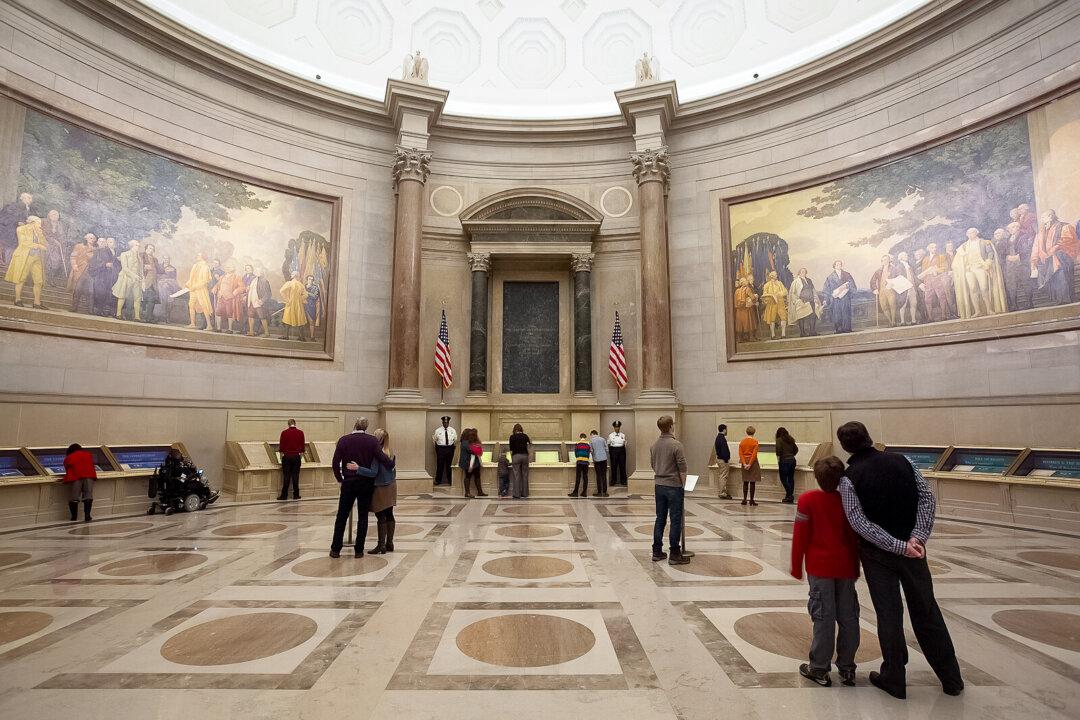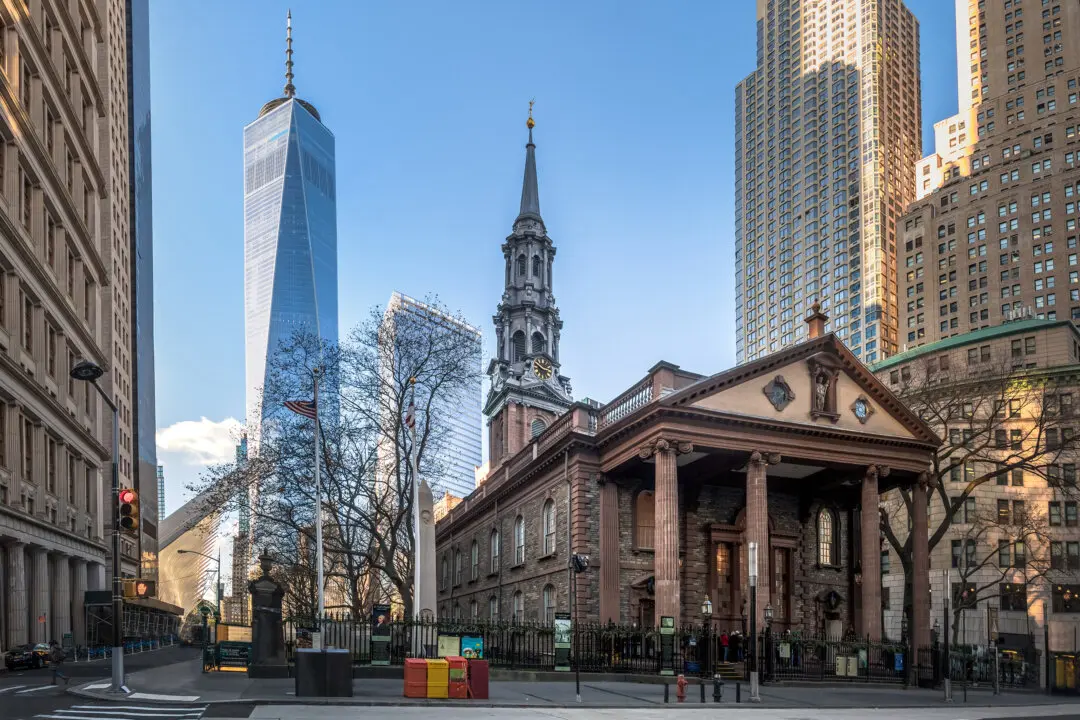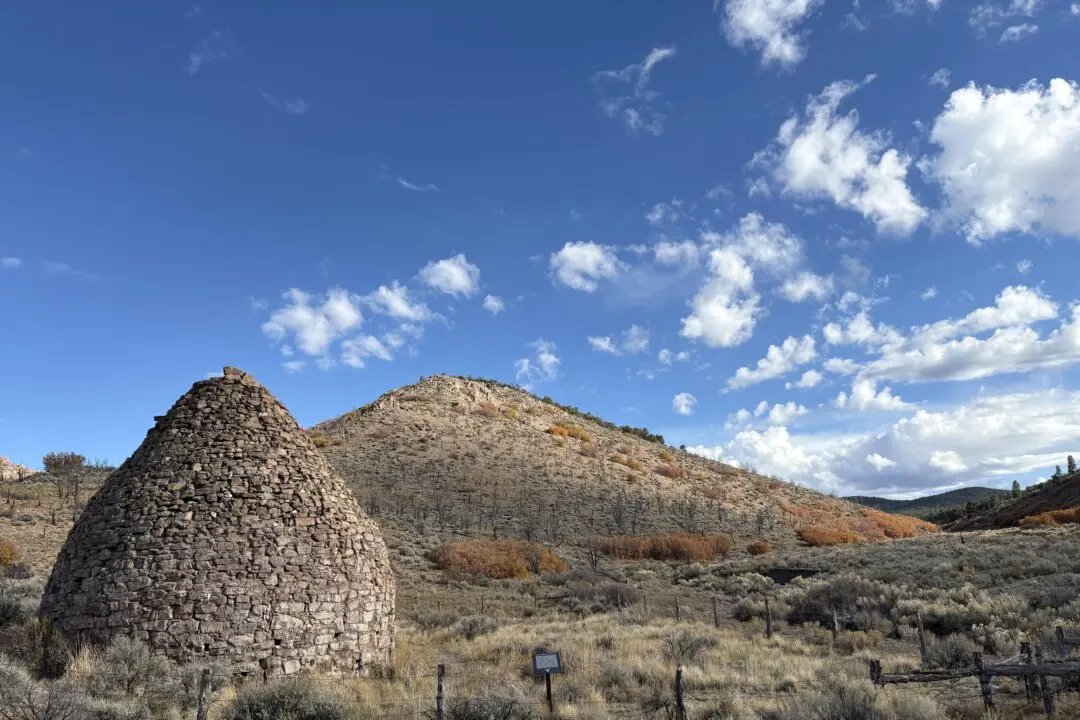A space that begs for reverence is the Rotunda for the Charters of Freedom at the National Archives in Washington. Immediately upon entering, visitors begin speaking in hushed tones or not at all. They take reflective stances, with hands clasped behind their backs or one arm folded and their chins resting on closed fists.
This is where America’s most important documents are housed, preserved, and displayed. The Declaration of Independence, the U.S. Constitution, and the Bill of Rights are the three monumentally important documents that established, secured, and perpetuate these United States.





